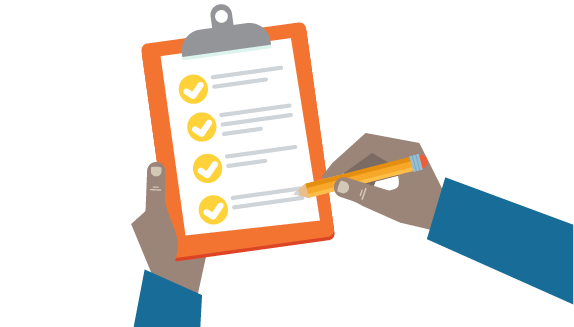
4 Simple tips for successful benefits communications

At some point in our careers, we HR professionals are bound to encounter this sobering realization: Many of the employees we work with don’t know what the heck we’re talking about a lot of the time.
We throw around terms like “premium,” “out-of-pocket maximum,” and “ESPP” with the casualness of a 15 year old referring to her favorite band, Five Seconds of Summer, as “5SOS.” Over time, it’s easy to start missing the quizzical expressions that appear on employees’ faces and just carry on with business as usual.
When this awareness hits—often in the form of an employee who is honest enough to admit that he doesn’t know what an “HSA” is—you may start overexplaining every little thing to make sure you cover your bases. When you launch a new program, you might want to devote several pages to it on your benefits website. And, just for good measure, you’d better create a glossary, an FAQ, and an employee guide.
That’s definitely a comprehensive approach, but is it the best use of your time and money? (No, it isn’t!) And, in your quest to explain every detail and answer every question that might pop into an employee’s head, are you possibly overcomplicating things and scaring them away? (Yes, you are!)
Here are a few quick tips to help you walk that fine line between giving employees the information they need and burdening them with too many mind-numbing details.
 1. Tell them why they should care.
1. Tell them why they should care.
Many employers subscribe to the “throwing spaghetti at the wall” approach to communications. “We have all of this helpful information. Let’s just toss it all at employees and see what sticks.” Not so fast. If you really want a message to make an impact, it’s best to focus on preparing one perfectly cooked noodle that has a good chance of sticking. In other words, whittle down the message to the main points that employees really need to know. The best way to do that is to constantly ask yourself, “What’s in it for them?”
For example, one of our clients wanted to communicate a change to their leave policy. Their initial email drafts contained a lot of background information about the process they went through in developing the policy and getting it approved by their leadership team. These details were obviously noteworthy to them because they had put months of effort into getting the project across the finish line. But that “behind the scenes” stuff doesn’t have much impact on employees, so we persuaded them to let it go.
What employees typically want to know is: 1) how the change affects them; and 2) what they need to do about it. Of course, a little context for why the change is being implemented is helpful. Just don’t make that the centerpiece.
Think of your communications as a store, and you’re either a dump-truck operator or a curator. You can either unload all your merchandise into one huge bin and make your customers dig through it to find what they want, or you can organize the merchandise for them so that they can immediately find the products they’ll find most useful. Obviously, we recommend the curating approach.
 2. Stick to the basics.
2. Stick to the basics.
You’ve undoubtedly faced the challenge of having to relay complex concepts to employees. Maybe you’ve been given the Herculean task of explaining the finer points of your company’s Employee Stock Purchase Plan (ESPP). The challenge, you’ve probably found, is showing how beneficial the plan can be without making the average employee’s head spin.
When one of our clients launched their ESPP a few years back, they had a hard time conveying two of the plan’s greatest features: the “look-back” feature and the “reset” feature. Because these features offered a big financial incentive to employees, our client felt like they needed to go into great detail about how each of them worked. We eventually convinced them that the “less is more” approach would probably be more compelling to employees than a long-winded explanation that read like a college dissertation. We ended up with these short, snappy descriptions:
- The look-back feature allows you to buy shares at the market price on either the offering date or the purchase date, whichever is lower. This allows you to buy at the lowest possible price.
- The reset feature is like a rewind button—it moves back the offering date if the share price decreases during your six-month purchase period. This allows you to get the lowest possible price for the next 12 months.
Now, employees may not fully grasp the finer nuances, like the difference between “offering date” and “purchase date,” but they can at least understand the most salient point: An ESPP can be a huge boon to their wallet. And more importantly, these simple, reader-friendly descriptions won’t scare employees away before they even consider exploring the plan.
 3. Keep it brief.
3. Keep it brief.
Don’t get us wrong: We love a nice, meaty FAQ. It can be a great resource for educating your workforce and stemming the flow of questions to your busy team. But as a rule, an FAQ should be more like a quick reference guide than an encyclopedia-like depository of every question that could possibly arise in the most inquisitive employee’s mind.
A client recently asked us to review an FAQ about their health savings account (HSA). It was an impressive document. In fact, at a whopping 30 pages, it was nearly the greatest story ever told. We advised the client to consider paring it down. The last thing you want is to give employees the impression that the program is just too complicated to bother with.
It’s like buying a toaster. Wouldn’t you be more inclined to buy the model with the three-step instructions on the back of the box than the one with a 50-page owner’s manual? Life is short. Whenever possible, FAQs should be, too.
This is typically an effective approach for creating FAQs:
- Compile all the questions you can think of.
- Scrupulously comb through the questions, looking for redundancies, opportunities to consolidate, and items that might be too granular or individualized (e.g., “What if I’m a 32-year-old woman who enrolls in this program on the third Monday of the month?”).
- Once you get it down to the essential questions that can truly benefit the majority of your employees, organize them into categories to make them as easy as possible to navigate.
 4. Let a graphic tell the story.
4. Let a graphic tell the story.
As a writer, I’m a little biased toward words. They tend to be pretty useful in conveying information. But an eye-catching graphic can be equally, if not more, effective in clearly illustrating how a complex plan, program, or feature works. A bold, colorful infographic not only grabs the reader’s attention, but it can also help you boil down a complicated idea to its most basic elements.
Even if you end up supplementing the graphic with text, the process of figuring out what needs to be visually represented can be helpful because it forces you to prioritize your messages. If a detail isn’t important enough to include in a graphic, then maybe it’s not important enough to bother communicating at all.
Want more suggestions for simplifying your benefit messages? We’re always here to help you refine your communications to make the maximum impact. Contact us.
Work with Us
We partner with organizations that value their people first. Let’s talk.

Brian Misso, Senior Writer, is our resident wizard of words, converting dense, complicated information into everyday language that is compelling and easy to understand.
